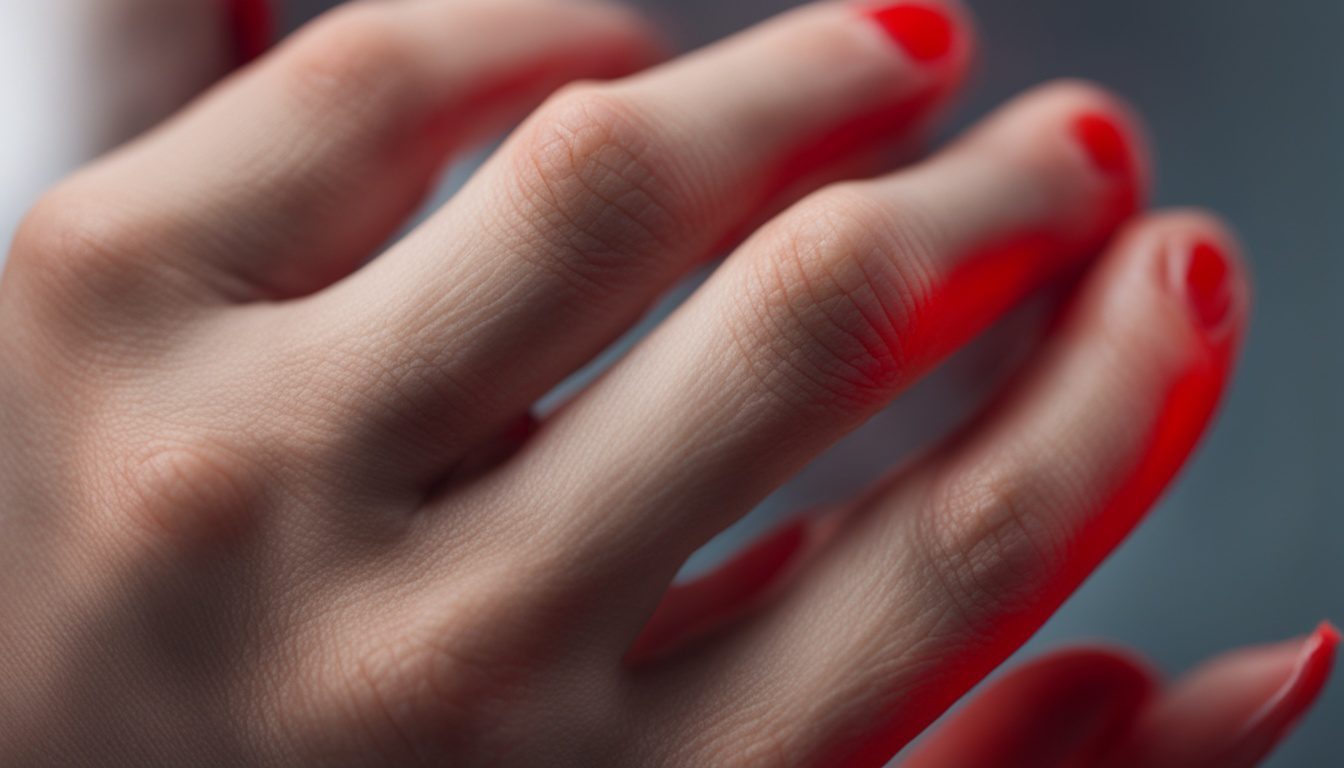De Quervain tenosynovitis affects the thumb and wrist tendons, leading to pain and inflammation. It often happens due to hand overuse, thumb injuries, or specific diseases like arthritis.
Symptoms can vary but often include thumb pain, trouble moving the thumb, and swelling. Some may also feel pain in their lower arm.
The Finkelstein test checks for this by bending the wrist outward and noting any pain. If it hurts, it could be De Quervain tenosynovitis.
Treatments range from wearing a splint to surgery. For some, platelet-rich plasma therapy can offer relief by injecting growth factors into the area.
If symptoms persist despite treatment, surgery might be necessary. It aims to free up the tendon and reduce pain, improving thumb movement.
Key Takeaways:
- De Quervain tenosynovitis involves thumb and wrist tendon inflammation.
- Common causes are overuse, thumb injuries, or certain diseases.
- Symptoms include thumb pain and difficulty moving the thumb.
- The Finkelstein test helps diagnose this condition.
- Treatments include splints, therapy with the patient’s own growth factors, and surgery if needed.
Causes and Risk Factors of De Quervain Tenosynovitis
De Quervain tenosynovitis causes pain and can be brought on by many things. Knowing these reasons helps in stopping and handling it.
Repeating the same hand motions is a big reason for De Quervain tenosynovitis. Things like video games, gardening, playing racket sports, and carrying heavy things with your thumb add too much stress on the thumb and wrist’s tendons. This stress leads to pain and inflammation.
Hurting your thumb directly or using your hand too much can also lead to this condition. These injuries impact the tendons, causing inflammation.
People with diseases like rheumatoid arthritis are more likely to have De Quervain tenosynovitis. These diseases can make the body’s tendons in the thumb and wrist more prone to harm and inflammation.
Age and gender matter too. Those between 30 and 50 face a higher chance of this condition. Also, women are at more risk than men, though we don’t know exactly why yet.
Work and life habits can up the chance of getting De Quervain tenosynovitis. Things like repetitive wrist movements and lots of lifting, particularly in motherhood, can harm the thumb tendons and cause inflammation.
In simpler words, doing the same hand gestures over and over, getting thumb injuries, and certain health conditions can lead to De Quervain tenosynovitis. Preventing these issues and changing harmful habits is crucial to keep your hands healthy and avoid this pain.
Treatment Options for De Quervain Tenosynovitis
De Quervain tenosynovitis is a common problem. It happens when the tendons in your thumb and wrist become inflamed. Treating it usually involves simple steps. The main target is to ease the pain, cut down on swelling, and get your hand working normally again.
To start with, you might need to wear a splint. This keeps your thumb and wrist still. It’s all about giving the tendons a chance to heal. You should also stop doing things that make the pain worse. This helps avoid more swelling and irritation.
Using ice can also help calm the swelling. Doctors might give you pills to help with the pain and swelling too. These steps are meant to make you more comfortable as you recover.
If these basic treatments don’t work, you might get a corticosteroid shot. This can really lower the swelling for a while and make you feel better. Or, you could try PRP. With PRP, they use your own growth factors to help the area heal. It’s a newer treatment but it’s showing good results.
Sometimes, surgery is the best choice. This is usually when nothing else has worked. The surgery lets the tendon move freely again. It takes away the pressure on the tendon. But remember, always talk with your doctor to plan the best treatment for you.

